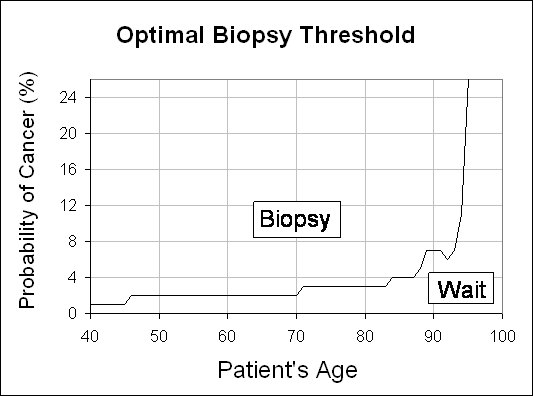|
||||
Monday, October 22, 2007 - 11:45 AM
F-6
WHEN TO BIOPSY IN BREAST CANCER DIAGNOSIS? A QUANTITATIVE MODEL USING MARKOV DECISION PROCESSES
Methods: We used a Markov Decision Process (MDP) model, an analytical tool for sequential decision-making, to develop an optimal biopsy decision model (OBDM). Our OBDM determines whether to biopsy the patient or wait for next annual mammogram based on her current breast cancer risk as estimated by her risk score (probability of breast cancer). We used a Bayesian network to estimate patient-specific probability of cancer based on the demographic risk factors and mammographic descriptors collected by radiologists. Our data come from the mammography database of an academic tertiary care referral hospital recorded between 1999-2004.
Results: We found the optimal policies, which are of control-limit type for each patient, i.e. the optimal decision is “always biopsy the patient” if her risk score is above the estimated threshold, and wait for her next annual mammogram's results, otherwise. The figure shows our preliminary results of optimal probability thresholds to biopsy for each age for a particular type of patient. For example, for a 60-year-old patient, if the probability of cancer based on her risk factors and mammographic findings is over 2% then send the patient for biopsy, otherwise wait for the next mammogram. The optimal probability thresholds change (increase) with age as demonstrated in the figure, which suggests that biopsy should be recommended less often for older women.
Conclusions: Given a patient's mammogram and risk factors, our OBDM can be used to decide whether to biopsy her or wait for her next annual mammogram's results. In addition, the decision to biopsy also depends highly on the age of the patient.


